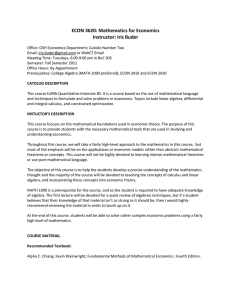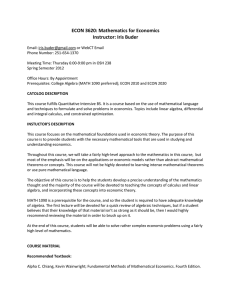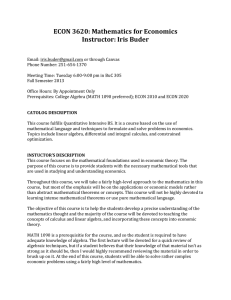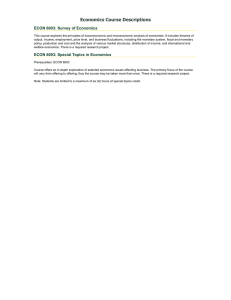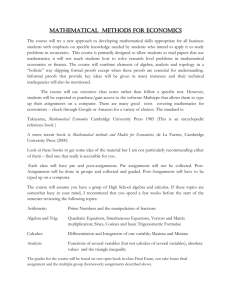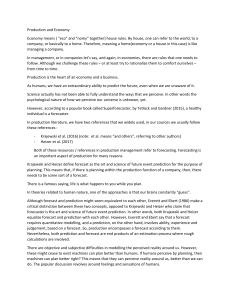Econ 200M/1 w/Dr. Gallet
advertisement
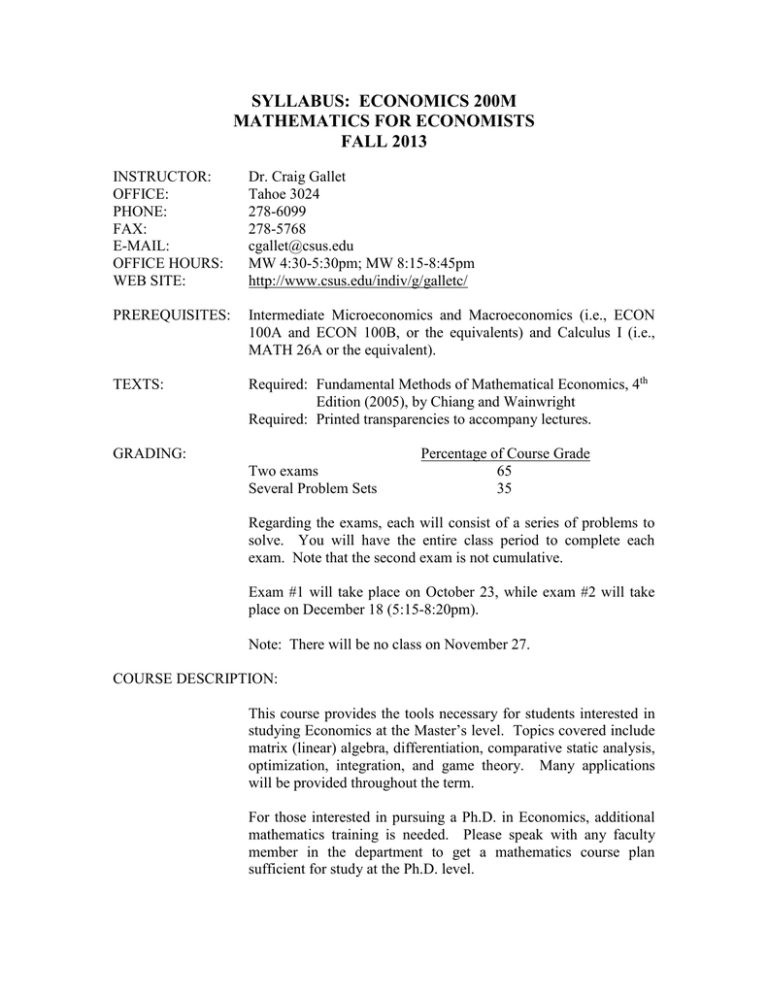
SYLLABUS: ECONOMICS 200M MATHEMATICS FOR ECONOMISTS FALL 2013 INSTRUCTOR: OFFICE: PHONE: FAX: E-MAIL: OFFICE HOURS: WEB SITE: Dr. Craig Gallet Tahoe 3024 278-6099 278-5768 cgallet@csus.edu MW 4:30-5:30pm; MW 8:15-8:45pm http://www.csus.edu/indiv/g/galletc/ PREREQUISITES: Intermediate Microeconomics and Macroeconomics (i.e., ECON 100A and ECON 100B, or the equivalents) and Calculus I (i.e., MATH 26A or the equivalent). TEXTS: Required: Fundamental Methods of Mathematical Economics, 4th Edition (2005), by Chiang and Wainwright Required: Printed transparencies to accompany lectures. GRADING: Two exams Several Problem Sets Percentage of Course Grade 65 35 Regarding the exams, each will consist of a series of problems to solve. You will have the entire class period to complete each exam. Note that the second exam is not cumulative. Exam #1 will take place on October 23, while exam #2 will take place on December 18 (5:15-8:20pm). Note: There will be no class on November 27. COURSE DESCRIPTION: This course provides the tools necessary for students interested in studying Economics at the Master’s level. Topics covered include matrix (linear) algebra, differentiation, comparative static analysis, optimization, integration, and game theory. Many applications will be provided throughout the term. For those interested in pursuing a Ph.D. in Economics, additional mathematics training is needed. Please speak with any faculty member in the department to get a mathematics course plan sufficient for study at the Ph.D. level. Why are students required to take this course? When the M.A. program was initiated several years ago, students were only required to have completed the equivalent of MATH 26A. However, during the early years of the program, roughly half of entering students either dropped out of the program or failed the first two courses (i.e., ECON 200A and ECON 200B), primarily because of the mathematical rigor of the program. Consequently, the department adopted this course as a requirement in order to provide students the mathematics tools needed to succeed in the M.A. program. LECTURE/READING OUTLINE: I. Introduction to Mathematical Economics (Chapter 1, skim Chapter 2) II. Static Analysis: Introduction (Chapter 3) III. Matrix Algebra (Chapters 4 and 5) IV. Comparative Static Analysis (Chapters 6 – 8) V. Optimization I: Univariate Functions (Chapter 9) VI. Exponential and Logarithmic Functions (Chapter 10) VII. Optimization II: Multivariate Functions (Chapter 11) VIII. Optimization III: Constrained Choices (Chapter 12) IX. Integral Calculus (Chapter 14, Sections 14.1 – 14.3) X. Game Theory Primer


